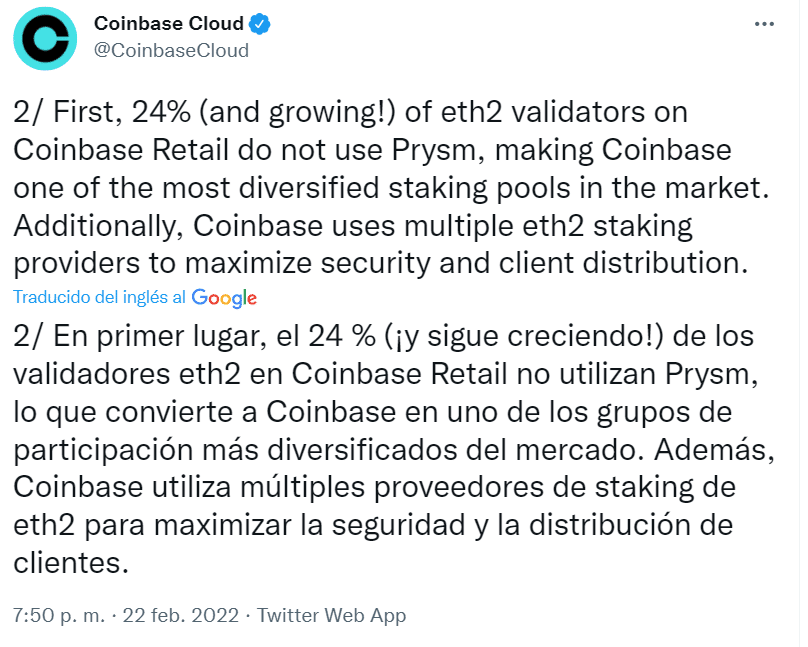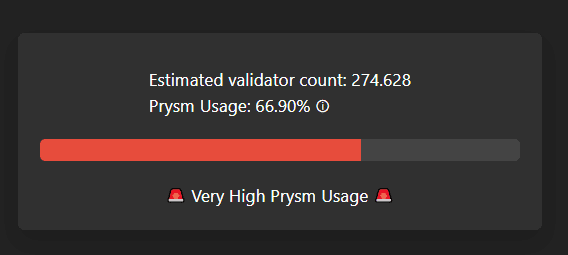With the transition to Ethereum 2.0 on the horizon, more and more validators are depositing ether (ETH), the cryptocurrency of this network, to contribute by confirming blocks in what will be the future merger. However, recent reports indicate that there is a centralization that has generated a state of “emergency”. The Coinbase cryptocurrency exchange, which owns a pool of stake of ETH, has relativized this centralization.
According to data from pools.invis.cloud, Coinbase is the pool of stake of Ethereum 2.0 with more validators. The estimated count is over 48,000, of which 92% use Prysm as a client.
However, the version of the exchange, published through its twitter account, differs from these numbers. According to Coinbase, 24% of validators do not use Prysmwhich makes Coinbase “one of the pools of stake most diversified in the market. That percentage of validators employing other clients is growing, the company added.
Advertising
On the other hand, Coinbase also reported that the decision to adopt Prysm was initially due to the fact that it was the only client available that supported remote signers. Among other advantages, this feature allows validators to generate and store their keys in isolated environments instead of doing it in the validator itself, which “greatly” increases its security.
As for other customers, Coinbase reported that it will soon add support for remote signers with Lighthouse, thus facilitating the adoption at scale of that client in your pool. Diversity in Ethereum 2.0 customers is a “critical” concern for the company, they said.

Beyond these clarifications from Coinbase, the other pools of stake majorities such as Kraken, Lido, Binance or Staked.us have not commented on this issue. Neither Prysmatic Labs, the developer of Prysm, has issued official statements.
The centralization of Ethereum 2.0 deserves a more exhaustive analysis
The high centralization in the new version of Ethereum was reported by CriptoNoticias on February 22. What is happening is that most pools of stake of large exchanges, some of them with more than 40,000 validators, are using the same client, Prysm, to implement the Ethereum 2.0 protocol.
Prysm dominance among validator pools is 67%, i.e. two-thirds of the total. According to the specialists cited in the article in question, it is something serious and is of an “emergency” nature.
Such an adjective is based on the fact that this not only leaves more users in a situation of vulnerability in the event that the client fails, but also the same network could have serious consequences. Among these, experts say that erroneous information could be written to the blockchain, leading to a fork.

However, this state of alarm can be weighed somewhat if it is considered that 66% of the total Ethereum 2.0 validators are unknownthat is, they are not linked to pools of stake. With this statistic of the beaconcha.in site, one caveat must be made, and that is that the pool of stake from Coinbase, which according to pools.invis.cloud, hosts approximately 48,000 validators.
Therefore, the percentage of independent validators could be less than the 66% mentioned. Anyway, it is clear that the figure is high and could counteract the state of centralization if there is a distribution between the clients used —a data not available at the moment—. On the other hand, if most of these validators use Prysm like the largest pools, the emergency in terms of centralization would be even greater.
